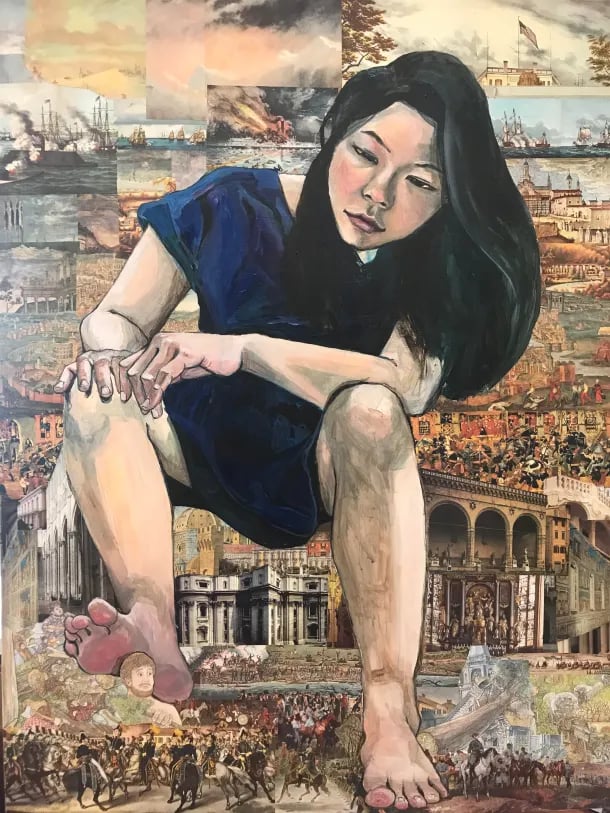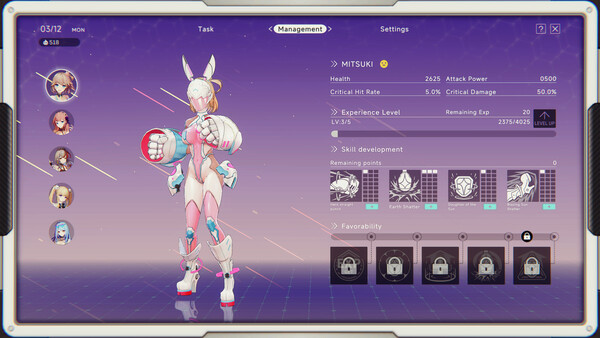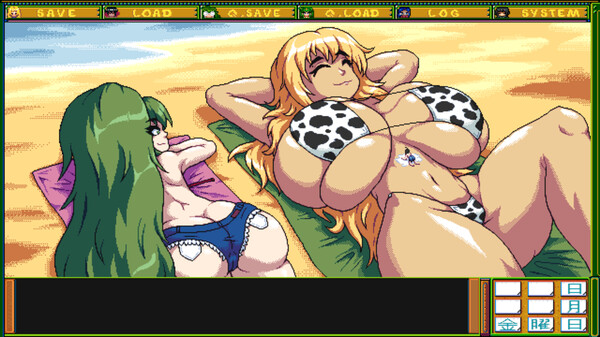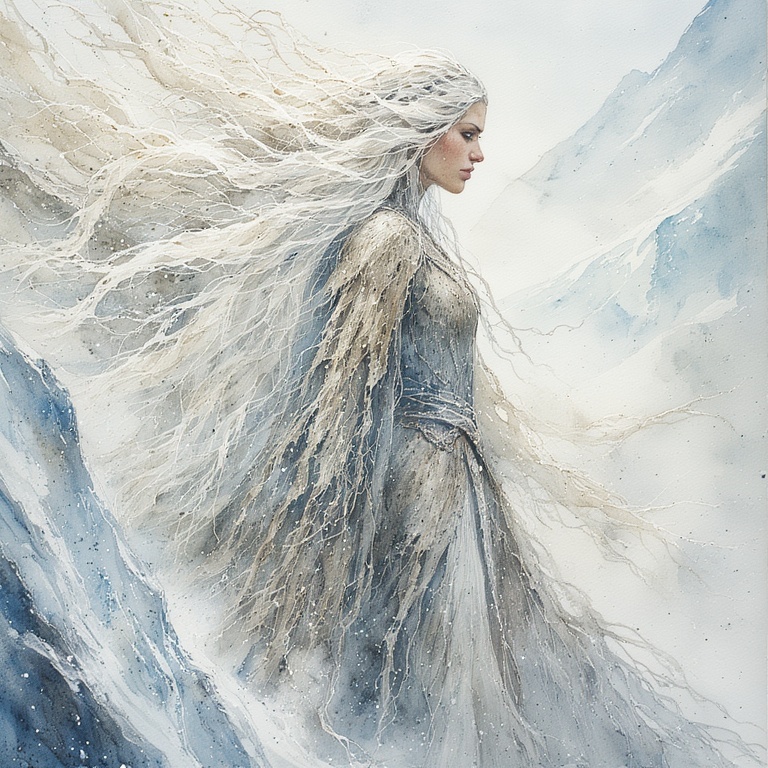Bestla's Daughters
Art exhibits of giantesses, sexualized giantess video games, and the creation of the Norse universe.

Coming at you way too soon, right? The news is actually building up, I can’t mete this out in monthly issues. Who knows, maybe sooner is sustainable, who can say.
And I’ve called this one “Bestla’s Daughters,” but she didn’t have any daughters. She’s the mother of Óðinn and others, and you’ll read more about her soon, but what I’m referring to are giantesses, as she may be considered the mother of them all. How are we treating Bestla’s daughters today? How do we see them, what do we want from them? What do they want, entirely independent of us? It would be worthwhile to meditate on that, once in a while.
Giantess News
Giantess Art
First up, two art installations by women reclaiming the giantess motif for its obvious qualities of strength, confidence, and independence.
Misoo Bang, a Korean-American woman living in Vermont, addresses many social and personal issues in her artwork. Using gigantic, empowered women, she confronts the fetishization and disempowerment of Asian women and her own survival of domestic sexual violence. Misoo is also a lecturer at the University of Vermont. Please read her interview in The VTDigger and The Dartmouth.

Amanda Ba is a dynamic artist whose works “Titanomachia” and “Blueprint Titan” also speak to power, when it inspires a wounded soul and when it can be abused. Her exhibition, The Incorrigible Giantess, delved into dystopian themes, destruction and loss. Amanda’s oeuvre, showcased on Instagram, reveals the savage power and determination of a wronged giantess and the consequences of this. Please read her interview on Hube Magazine.
Video Games
And it feels like a real punch in the gut to shift from women rising from their rubble to find empowerment, to male-gaze objectification/exploitation, but here we go. That’s our world, isn’t it? Doing this constant two-step between trying to be good people and owning our desires?
UltraGirl Alters self-describes as a “non-gacha” game in which you’re the manager of a J-pop girl band who also become gigantic sexy mecha-warriors. You get to help them work through their personal problems, and together you unearth corporate corruption. There’s a lot going on here.

Slowly you can attract friends to fight with you, and Gamespark reports “sexy moves” you can use to devastate your foes. (You should have a browser with a translator by now.) It was released to Steam on Oct. 23 and you can buy it at a discount until Nov. 7.
If you’re a lover and not a fighter, save the date for Big Beautiful Women: Giantess Dating Action. Frankly, this labor of love looks much less slick, a ’90s retro-style game illustrated with Western-anime styling—it is in fact only available in English. The plot here is less sophisticated: a meteorite struck a town and imbued some women with height and macromastia.

You, the invariable male lead, have moved back to your hometown, only to discover five of your childhood friends are towering and outrageously endowed. Each character has two endings, so your goal may be to explore all ten. Again, Gamespark has the rundown of the gameplay; you can play a demo in Steam, and it comes out in early 2026.
Scandi Giantess: Bestla
All right, let’s get into the mythology once more. This time we’re going way back to the beginning of everything, the Gylfaginning section of the Prose Edda.
In the beginning there was only Niflheimr, “the world of mist and ice,” the dark frozen world in the north. To the south was Muspell, “the world of fire,” and between these lay Ginnungagap, “the gaping void.” And in this void there was nothing but the first jötunn, the primordial giant Ymir (pron. “Oo-mirr”).
Let this entry be one of dispelling illusions. Yes, the Y in Old Norse was likely pronounced like a double-O, or a German Ü if you want to be fancy, so Yggdrasil was “Oog-drazzle,” crudely. Gygr, the word for female giants, was said “googer.” (Try to roll your R’s to reduce the ridiculousness of it.) And the only thing more personally wounding than understanding square-cube law is learning that “jötunn” is etymologically unrelated to “giant,” and the Old Norse myths never mentioned giants at all, as a race. A character might become giant for the purposes of a story, but it was never permanent. Jötnar were likely just a category of powerful supernatural creature. Þursar were brutal jötnar, skessur were magic-using jötnar, &c., but nothing really says they were big.
Let’s observe a moment of silence.
And now, let’s set all that aside and continue loving and pursuing giantesses. Reality’s up for grabs.
In the center of Niflheimr and beneath the roots of Yggdrasil was the spring Hvergelmir (probably “roaring cauldron”), and this flowed out into twelve poisonous rivers, called Élivágar, “storm bays.” They flowed so far out of Niflheimr they froze into rime and filled the northern region of Ginnungagap, eventually encountering the burning sparks and molten material thrown off from Muspell. The runoff from this melt created poisonous droplets that formed into the likeness of a man, and this became Ymir (Aurgelmir, “muddy-yeller”), dweller in the void.
While Ymir slept, he sweated, and from this a man and woman were formed under his left armpit. Sources say either his legs or his feet rubbed together (or had a form of intercourse) and created a six-headed son. This man, woman, and six-headed creature were the first hrímþursar (rime-þurs), what I would have called the first giants, frost giants, but now I’m being more careful with my terminology. These þursar were unnamed, because their only role was to die: keep reading.
There was also a primeval cow, Auðhumla (“hornless cow rich in milk”), who was formed only from the melting rime. Ymir subsisted on her milk, and she fed on salty rime formations. In licking these, she exposed an embedded figure, Búri (“parent”), who was large, powerful, and good looking, but not a giant—he was created from salty ice. With no named mate, he had a son named Borr (“son”). Diminishing returns on names, here.
After the initial three hrímþursar, Ymir is understood to have created more jötnar, one of whom was named Bǫlþorn, and he had a daughter, Bestla. They are inarguably, unquestionably jötnar.

Bestla married Borr, and their children were Óðinn, Vili, and Vé. These children promptly slew Ymir, lifted his corpse out of Ginnungagap, and used parts of his body to create the entire world. So it must be understood that Ymir was gigantic, but he was also the only one of his kind. When Bestla’s children killed him, all the initial hrímþursar drowned in the flood of his blood, but some of the jötnar survived, like Bestla and someone called Bergelmir, who actually is the father of all jötnar.
And Óðinn is thus half-jötunn—in skaldic poetry, Óðinn is referred to in kenning as “Bestla’s son.” Perhaps it’s that aspect to his nature that makes him naturally disposed to seiðr (magic), which is normally women’s domain.
But this is about Bestla, and mostly I’ve told you the prominent aspects of her, but I still have a few details to share.
No one’s sure what her name means. It could come from Old English bast, “tree bark,” or Proto-Germanic bastilōn, “bark-giver;” it could come from an Old Frisian root, bōst, “marriage,” or bōstigia, “wife.” Essentially, Parent gave birth to Son, who married Wife. With these foundational names out of the way, naming had to become more complex from this point on.
Bestla’s associations with trees, if any, could represent her life-bearing aspect. Jötnar are associated with natural order, and trees erupt from the ground. She gave birth to three men who shaped the universe. She’s therefore the bridge between the jötnar and the gods.
You’ll recall from earlier newsletters that some Scandinavian dynasties trace their lineage back to giantesses, specifically for the prestige and power that bears. Is it any different here? So please bear witness to their fall and denigration in the legendary myths. Óðinn and other gods use them as consorts and dalliances to obtain something else they wanted. It seems they believe what they bring to sexual intercourse is some priceless prize that women are eagerly waiting for, and this justifies using them and tossing them aside.
In Hávamál stanza 140, Óðinn asserts that he learned “nine mighty songs” (charms) from Bestla’s father’s famous son, which would be Bestla’s brother. Some scholars think this might be the jötunn Mímir, one of the most powerful holders of wisdom.
And once again, I feel like I’ve written so overmuch that I shouldn’t try to cram in a 2,000-word story at the end. If you’re interested in my (erotic) fiction about giant women and tiny men—not necessarily Scandinavian—please check out my October story-a-day project, where I’ve written over 54,000 with one week left to go in the month. I’ve been trying to relearn the joy of writing, intrinsically.
Thank you for paying attention! Feel free to share this newsletter with anyone you think might be interested in anything I’ve talked about.
In Her Shadow,
Aborigen
©2025 Aborigen/Size Riot
